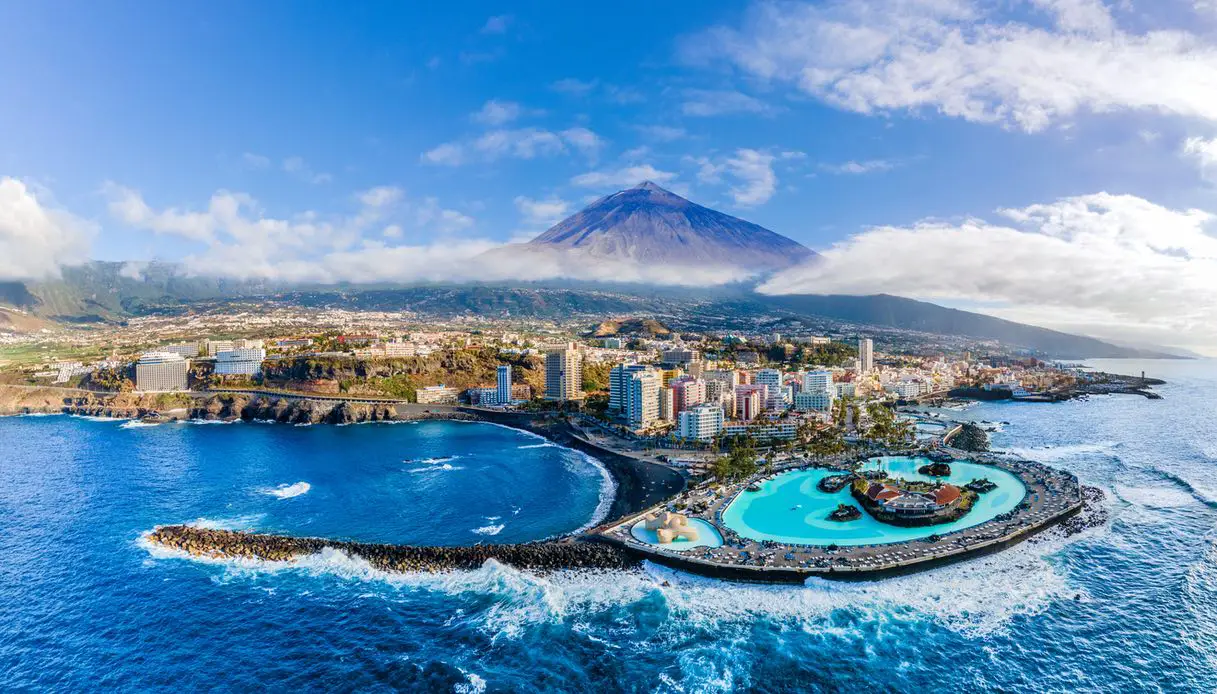The inhabitants of a Spanish island much loved by holidaymakers, including Italians, they have urged visitors to leave, for the negative impacts that mass tourism has on the environment and their lifestyle. And the hypothesis of introducing one also arises “eco-tax”. Here’s what happens.
Tenerife against visitors: “Tourists go home”
“Tourists, go home”. The ‘shock’ writing appeared for some time on the walls of Tenerife, as well as on one of its most beautiful beaches, the Tejta, is the cry raised by the residents, tired and exasperated by mass tourism which, according to them, is making the island unlivable. In the sunny pearl of the Canaries, holidaymakers, therefore, would seem to no longer be welcome.
Protesters took to the streets to demand action against those they consider “irreparable damage” caused by mass tourism in the main centers of the island, such as the modern and cosmopolitan one Santa Cruz of Tenerifee San Cristobal de La Lagunathe only city on the island to have been declared a World Heritage Site by UNESCO.
According to what was reported by the local newspaper Canarian Weeklyassociations and environmentalists waved signs with the words “The Canary Islands are no longer a paradise” e “The Canary Islands are not for sale“. Locals’ discontent stems from the negative impacts that crowds of tourists have on the environment and lifestyle. For this reason, they ask to reduce the number of visitors and to introduce an “eco-tax” to finance environmental conservation projects.
The complaints extend to problems with sewage spills, long traffic jams and damage caused by excessive tourism and the construction of new hotel complexes along Tenerife’s popular southern beaches, which are starting to eat into the island’s natural wonders. The Canary Islands, however, are not the only Spanish islands to want to fend off the crowds of tourists. Even the Balearics, including Majorca e Ibizahave cracked down on unruly visitors, implementing new rules for holidaymakers, such as six-drink limits at all-inclusive resorts.
Read also: Visiting the Cathédrale Notre-Dame de Paris
Tenerife’s commitment to reduce emissions
As part of environmental impact management, the Ministry of Tourism and Employment of the Canary Islands participated in the COP28 in Dubai, and was the only Spanish tourist destination to do so. At the conference, Minister Jéssica de León illustrated a roadmap for reduce your carbon footprintincluding a free digital tool for tourism businesses to measure and reduce their emissions.
Second Statesman, in 2022 more than 5.8 million tourists traveled to Tenerife. Nearly three million of these came from locations outside Spain. A spokesperson for the protesters said that the island’s natural spaces are being destroyed by mass tourism, complaining about the constant presence of construction sites that disfigure the environment and the dramatic growth in property costs, partly due to the demand for holiday rentals .
The requests of the inhabitants are many. These include limiting the number of those moving full-time to the island, as well as the purchases of a second home. Furthermore, in addition to the introduction of the eco-tax, we also ask for that of a cap on the number of tourists who arrive on the island. Tenerife, however, is not the only one wanting to put a stop to mass tourism. Lanzarote also shocked visitors recently when it announced it was moving to quality tourismWhile Barcelona has seen increased protests against the high number of people visiting the city.
Read also:Passport to Adventure: Unraveling the Mysteries of Travel
Seattle: Leading the Way in Sustainable Development and Innovation
Sleep Tourism Is Trending in 2023, With A.I.-Equipped Hotel Beds and Glamping Under Dark Skies





